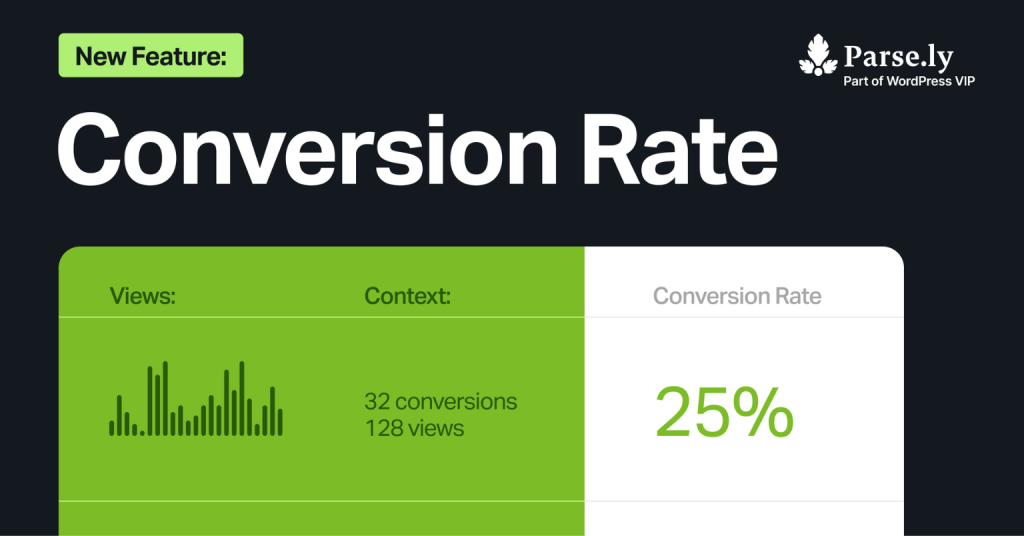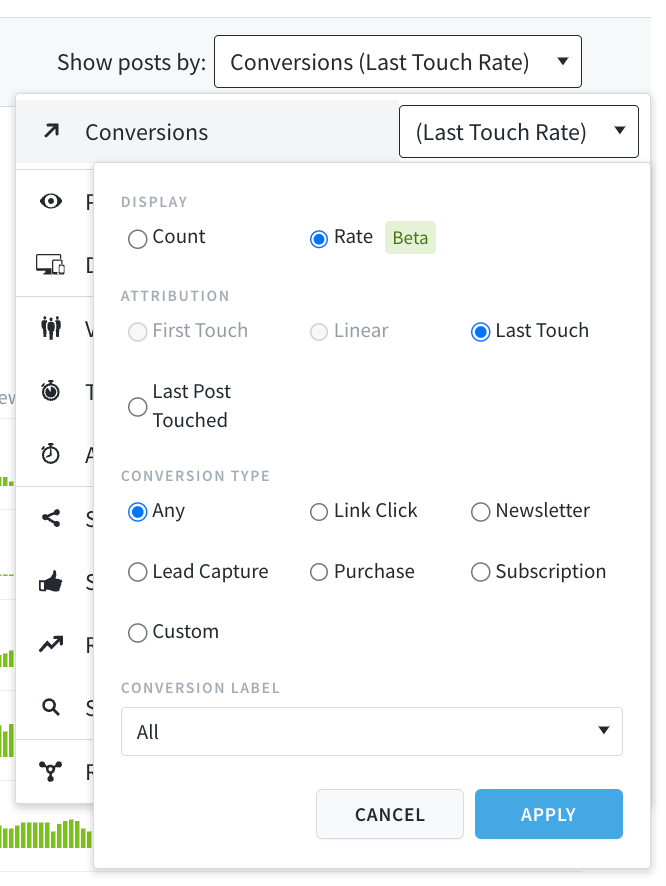Feature Announcement: Conversion Rate

Not all content gets distributed equally, and there’s a high chance you have some under-the-radar content that could perform very well if given a bigger spotlight.
Finding those hits used to be difficult—but now, with our new Conversion Rate feature, it’s just a few clicks away.
What is the new Conversion Rate feature?
Conversion Rate is a metric that shows what percentage of pageviews convert on a specific page or post for Last-Touch conversion models.
How is Conversion Rate calculated?
The conversion rate metric in Parse.ly is calculated by the number of conversions divided by the number of pageviews, then multiplied by 100 to receive a percentage.
For example, if there are 100 views of a given page, and five of those views convert, your conversion rate is 5%.

How you can use Conversion Rate to improve strategy
Using Conversion Rate as North Star metric will help you:
1. Improve your content distribution
The distribution of content is frequently more important to its outcomes than the actual quality of the content itself. More results will come from content that is on the home page, that has a ton of paid ads pushing traffic to it, or is emailed to 100,000 people.
Deciding which content gets the full spectrum of distribution is the key here. With the new Conversion Rate feature, you can now quickly identify the high-quality content to include in newsletters, put on the home page, push paid traffic to, or promote in other ways.
2. Optimize content and increase ROI
If you know which content leads to a higher conversion rate—an indicator of audience preference—you can focus your efforts on creating similar content. For example, if you find that long blog posts convert better than short ones, you may decide to create longer content in the future.
High conversion rates usually signify that users are finding what they want and need from your content. This means your content is effectively meeting user needs and providing a good user experience, which can lead to better brand loyalty and customer retention. And the more conversions you have, the higher your ROI.
By optimizing your content strategy based on conversion rate data, you can better allocate resources and increase your ROI.
3. Implement A/B testing
If you’re not sure whether a video or an infographic would be more effective for a particular piece of content, you can create both and see which one produces a higher conversion rate.
Measuring content performance on the conversion rate allows for more accurate, data-driven decision making. Instead of guessing or relying on gut feelings about what type of content to produce, you can use data to guide your decisions.
This is something we preach a lot at Parse.ly. Making smart, data-driven decisions is a key indicator in the success of our customers.
Where can I access Conversion Rate?
Conversion Rate is available in the metric selector when toggling between the count and rate options for Posts, Authors, Sections, and Tags.
The Conversion Rate feature will work for Last Touch and Last Post Touched attribution on the Overview, Pages, Authors, and Tags site tabs.

Having trouble accessing Conversion Rate in your dashboard? Reach out to your Parse.ly representative or schedule a demo.